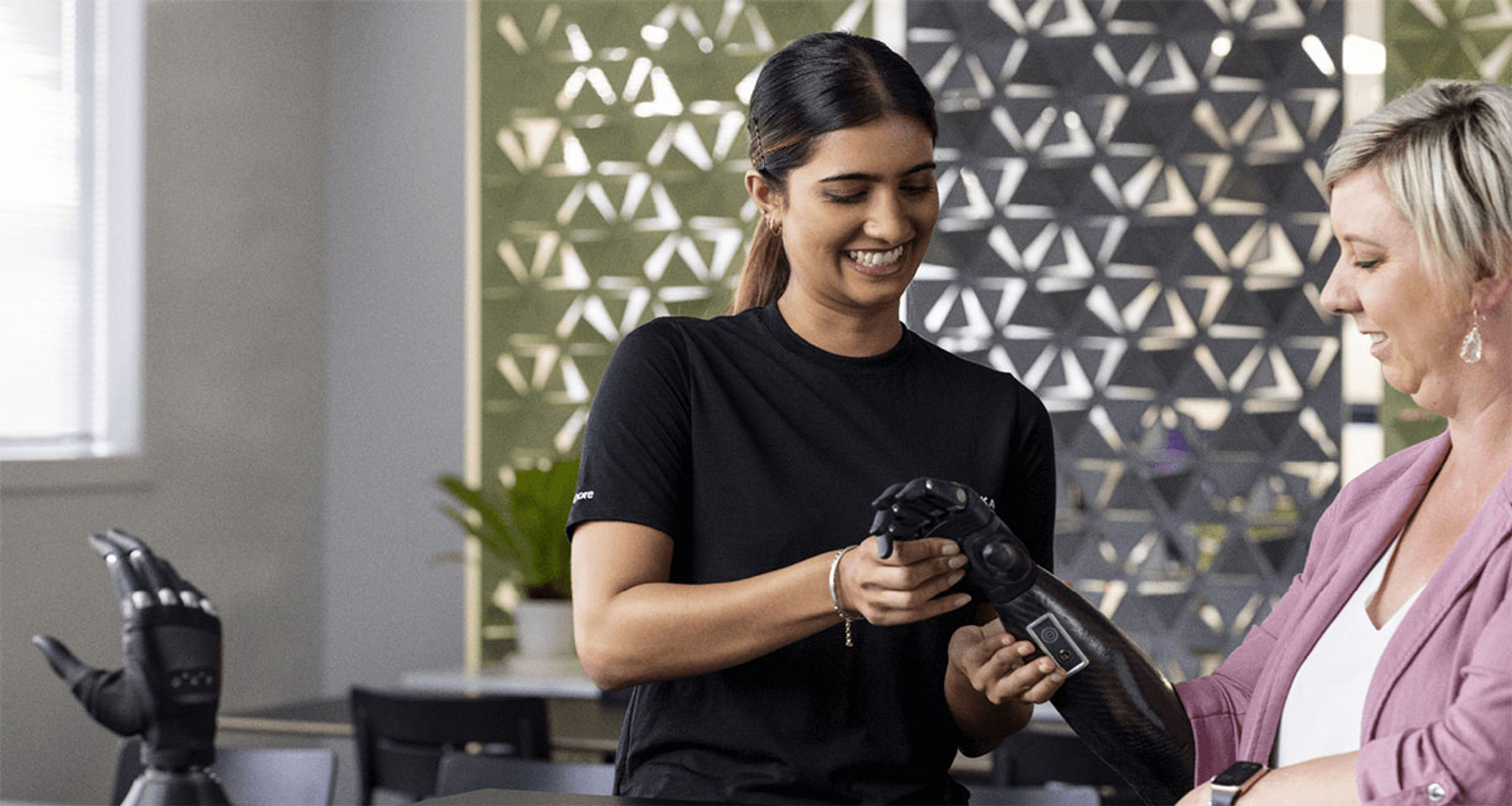
'This journey is not just about finding a replacement for your upper limb difference, but about embracing a tool that can empower you to achieve functionality, confidence and lead a fulfilling life.'
2/21/2024
What to know before choosing a prosthetic arm
If you or a loved one has an upper limb difference, there are many things to consider before choosing a prosthetic arm, or upper limb prosthesis, as commonly called in the industry. If the cause of the limb difference was due to the amputation of an arm or hand, you will most likely need recovery time and healing of your residual limb. After this important phase, the rehabilitation process can begin, and you may eventually be prescribed with an upper limb prosthesis.
In short, the prosthesis can vary wildly depending on several factors such as the level of amputation; how the terminal device (such as a prosthetic hand) is powered; other components required (such as electric wrist rotator, control systems, powered elbows), the ability the individual has in their residual limb, etc. Once your prosthetist presents you with your options, one of the first things to consider is functionality.
Functionality
Prostheses are tailored to their users and their specific needs. There are many devices and technologies available that can restore function depending on your needs. For example, if you are after a prosthesis that will allow you to perform an array of activities of daily living, you need a device that is robust and easy to use like the TASKA Hand, which is also waterproof. Your prosthetist will recommend a prosthetic device based primarily on your goals.
Comfort
It is likely that you will use your upper limb prosthesis daily. Sometimes, all day, every day. So, make sure you don’t overlook the level of comfort of your device during the fitting and/or follow up appointments with your prosthetist. Having a well fitted socket is essential and will impact on your ability to successfully use the prosthesis, especially if you chose a myoelectric device.
Technology
There are several technologies for arm prostheses available. Examples of these include:
- Passive prosthetics, which serve purely for aesthetic purposes allowing amputees to restore a natural appearance of their arm or hand.
- Body-powered prosthetics, which are prostheses that use a system of cables that connect the artificial arm or hand to another part of the body, typically the opposite shoulder. By moving this shoulder, the individual manipulates the prosthetic.
- Myoelectric prosthetics, like the TASKA Hand, are driven by electrical signals produced by the muscles in the residual limb. You can learn more about them here.
- Activity-specific prosthetics, which help individuals complete work, sports, hobbies, or other activities, and are specifically tailored to them.
Cost
Costs will vary depending on your needs with rehabilitation, healthcare professionals’ appointments, building your prosthesis, and the types of prosthesis available for your situation, including the complexity of your desired system.
Prices also vary depending on which part of the world you are located and your insurance details, if you have any. Consulting with your prosthetist becomes crucial in navigating these considerations and making an informed decision.
In conclusion, choosing a prosthesis is a decision that involves considering various factors to ensure that your specific needs and goals are met. Working closely with your prosthetist is the best way to ensure you are choosing what’s right for you. Ultimately, this journey is not just about finding a replacement for your upper limb difference, but about embracing a tool that can empower you to achieve functionality, confidence and lead a fulfilling life.

Stay in touch.
Join our mailing list to be the first to find out about product updates, handy tips and more.
SubscribeYou can unsubscribe from our newsletter at any time. We do not sell or distribute your email address to any third party. Please view our Privacy Policy.